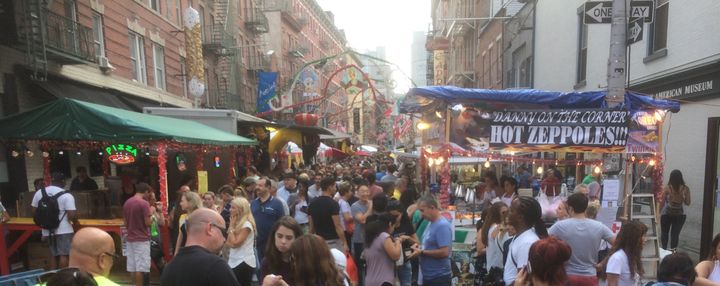
Feast of San Gennero, corner of Mulberry and Grand Streets, New York City (Photo D. Dominick Lombardi)
Weaving my way south on Mulberry Street between Houston and Canal, with the Feast of San Gennero in full swing, is a little bit like stepping back in time. I remember the 1960s and 70s, when Manhattan’s Little Italy was still a vast and lively neighborhood filled with colorful shops and enticing restaurants. In his 2004 New York magazine article “Arrivederci, Little Italy”, Bill Tonelli wrote: “Once, Little Italy was like an insular Neapolitan village re-created on these shores, with its own language, customs, and financial and cultural institutions. Today, Little Italy is a veneer—50 or so restaurants and cafés catering to tourists, covering a dense neighborhood of tenements shared by recent Chinese immigrants, young Americans who can’t afford SoHo, and a few remaining real live Italians. At the turn of the twentieth century, more than 90 percent of the Fourteenth Ward’s inhabitants were Italian by birth or blood. In 2000, the three U.S. Census tracts that constitute Little Italy were home to 1,211 residents claiming Italian ancestry—8.25 percent of the total, roughly the same as the proportion of Italians in the entire city.”

Passage IT, iron and velvet paper, 53 x 69 x 14 cm (all photos courtesy of the Museum unless otherwise noted)
Luckily, for us today, there is the Italian American Museum located at 155 Mulberry Street. There, you will find two exhibition spaces. The first features various kiosks and display cases filled with objects, artifacts, pictures and posters that give you a very palpable awareness of the not so distant past. The second space is where you will find changing, curated contemporary art exhibitions that show the depth and range of the more thought provoking aspects of Italian American culture and the like. The current show, Yorgos Giotsas: Passage, offers an all too familiar ever-present and topical theme that is relative to our nation’s current social-political debates.
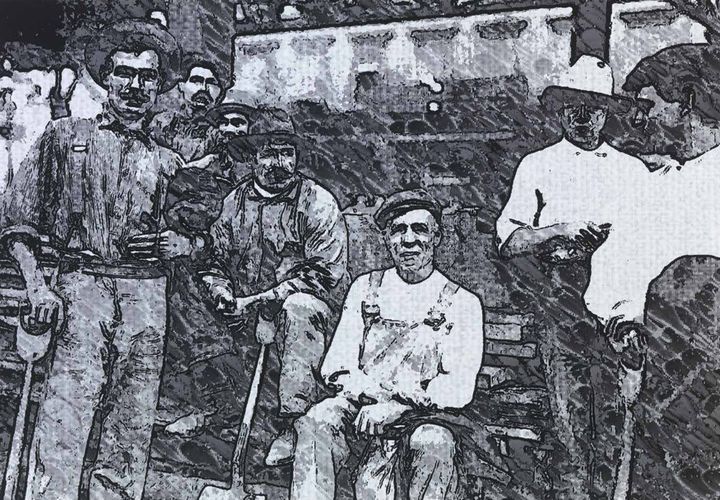
Passage 1, mixed media on paper – UV transfer on fine art paper, pen, pencil and in, 22 x 36.5 cm
Physical Displacement by ones own initiative, as with the Italian immigrants who came to New York City seeking a better life, like most immigrations, is a timeless tale of drive and desire. On the other hand, the refugee who moves from place to place as a result of war, political upheaval or ethnic and religious conflict is another endless story – only this one is teeming with continuous misery and far more inhumanity.
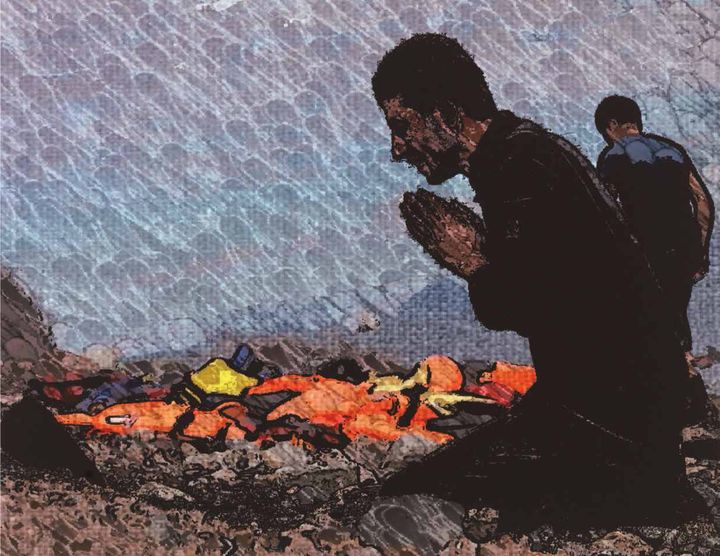
Passage P, mixed media on paper – UV transfer on fine art paper, water color, pencil and ink 18 x 23 cm
In both instances, the common thread is mankind’s innate ability to withstand the darkest of days and the deepest sorrow. Displaced individuals, especially those in flight from oppression and tyranny, have little or nothing, no safety net besides an occasional hand out and whatever they can carry on their backs. Yet their will to survive, fueled by the slightest prospect of peace and the chance for a better life builds enough hope to carry on – an indelible human trait and one emotional message in this exhibition.
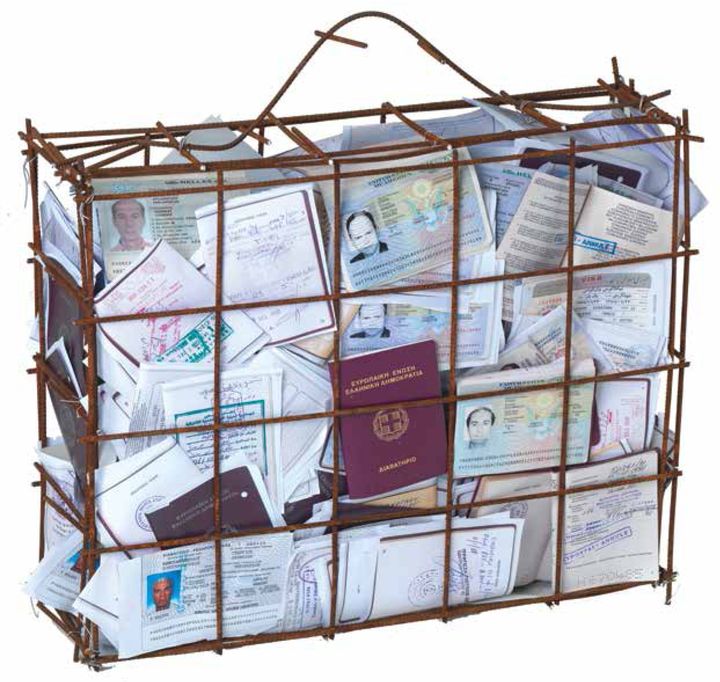
Passage PT, iron and passport documents, 44 x 50 x 15 cm
Overall, the installation is comprised of prints, sculptures and artifacts that connect the challenges of past Italian immigration with the unthinkable struggles of the Syrian refugees. And despite the extreme differences in he two with respect to root causes, we see in these works the story of all human history, forever marked by overwhelming upheaval and undying faith.
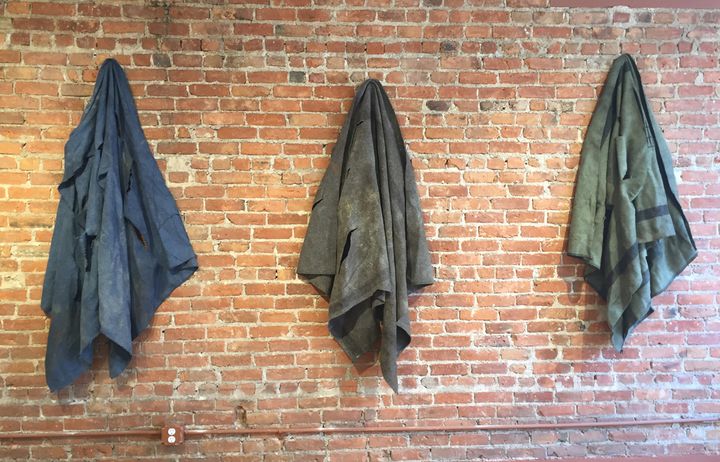
Passage B, wool blankets, 140 x 180 each (Photo: Antonio F Petracca)
We sense from the photographs of both groups a unity governed by the will to survive not just as a people, but also as a culture. We carry with us our memories, our experiences, our ancestry and our truths. A reality that is echoed in Giotsas’ rusted wire suitcases filled with references to nationality, passage and the idea that we travel as a people. We bring with us what we can in our minds and hearts: our morals, our beliefs and our heritage. This is an important point to take with you as you exit the exhibition, that the protagonists and the persecutors, the forces that compel us to move cannot erase our souls, even when one is stripped of their life and land.
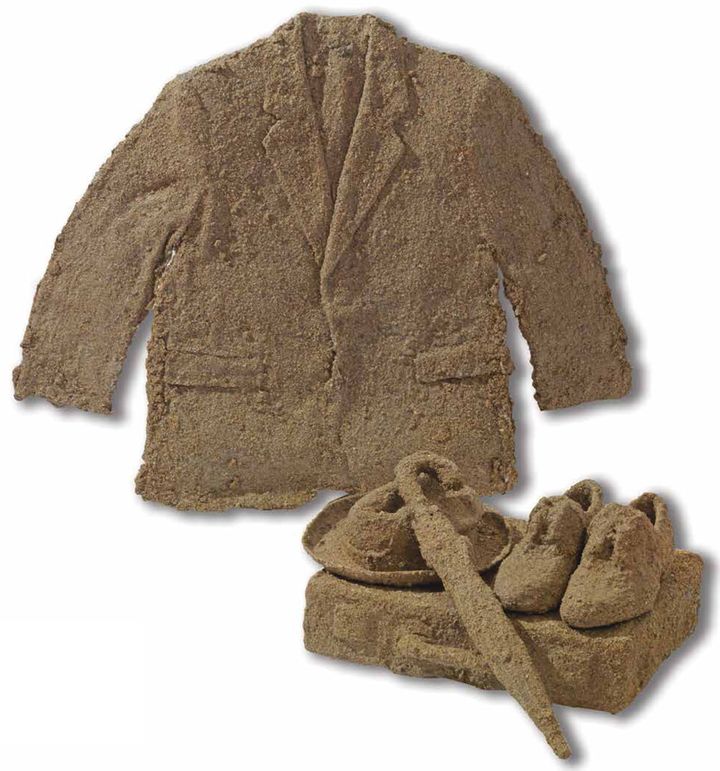
Passage CL, sand, cement and resins, 90 x 80 x 15 cm
Then there are the sandy colored, concrete laden jacket, hat, umbrella and briefcase. These objects immediately remind this reviewer of the great German Fluxus artist and theorist Joseph Beuys who too conveyed many profound insights about life, survival, social issues and politics using a few iconic objects like a felt Suit, a wooden sled and animal fat. In addition, the life preservers shown here, which are rendered useless by the artist as they are filled with more concrete and covered with small rocks, pebbles and sand, fulfill a similar purpose. Seeing them displayed adjacent to a few of the actual blankets given to recent Syrian refugees is a stirring reminder that the most difficult circumstances and the smallest amount of hope can sustain human existence. That, no matter how transient one is, no matter how tragic the circumstances are, there is always the potential to be brought back to the shores one left behind, or to feel at home in a new land, even if it takes years, even generations, and more than one miracle.
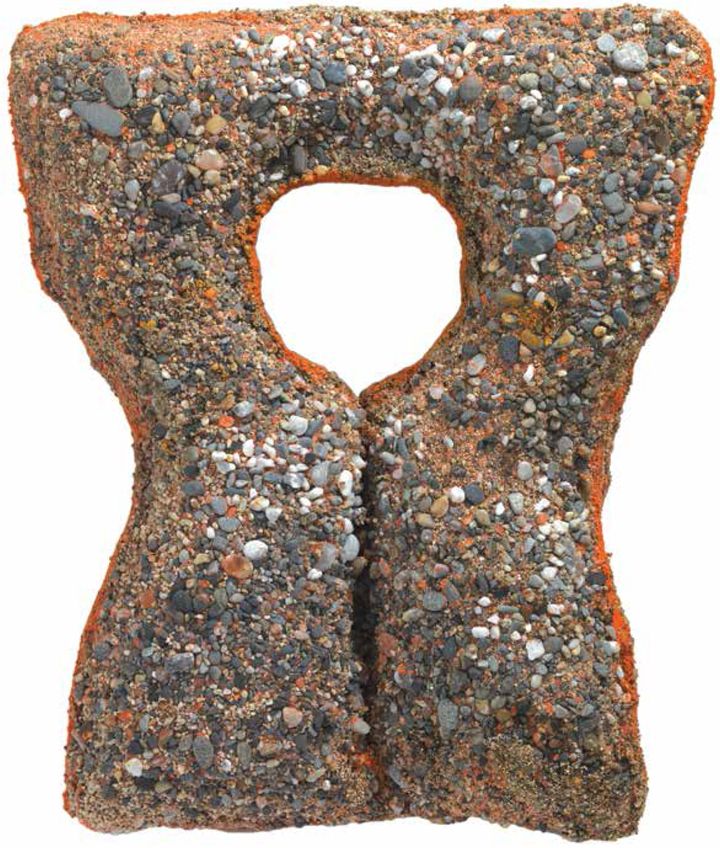
Passage V, life jacket, stones, cement and resins, 49 x 42 x 15 cm